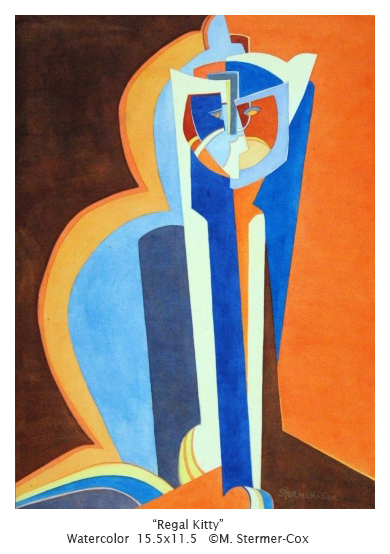Cubism Teaser
With this blog post, I’d like to share my experiences while “flirting with Cubism”. I am not a Cubist and I’ll tell you why. But, Cubism has influence my work and continues to do so.
This is part of my personal “mini retrospective”. I am reviewing what I’ve learned during my last 15 years of drawing and painting.
Why Cubism
I grew up looking at books and magazines with Cubist artwork. I liked the work of the Cubist movement, including Pablo Picasso, Georges Braque, Juan Gris and the sculptor, Henri Laurens.
Definition?
Come to think of it, I would say I am still unable to give a concise definition of Cubism or tell you how to do it. It was a way of exploring and investigating problems in depicting three dimensional forms on a two dimensional surface. It was different from the way of drawing and painting that started during the Renaissance.
History by Bullet
I thought I’d orient this discussion by giving a few historical points about “Cubism”. Most of my understanding comes from a book on Cubism written by art historian Douglas Cooper.
- “Cubism” was an art form of the early 20th Century.
- Georges Braque and Pablo Picasso were the founders and earliest proponents.
- Cubism blossomed, evolved and then died within 20 years.
- Cubism and the other movements of the early 20th century gave birth to modern art. They pioneered the way for different ways of approaching problems in 2D and 3D art.

- Cubism was an investigation of forms and light. The question? How to depict the truth of a three dimensional object on a two dimensional picture plane.
- For example, artists since the Renaissance created the illusion of three dimensional form by using perspective and tonal effects. Renaissance artist drew and painted what they saw. Cubists, in theory, showed all the different sides of the three dimensional object on a flat surface. Their view point was drawing and painting what their knowledge told them about the object.
- Drawing what you see vice what you know can produce radically different approaches.
- And, it gets more complicated. Some people tried to classify the different types of Cubism. It was enough to give me a headache. However, I think the artists did whatever they needed to when they faced the canvas.
I Am Not A Cubist
According to Douglas Cooper, the true “Cubist” were Picasso, Braque and Gris. Many other artists experimented with Cubism. But, the big three defined the genre and were the main practitioners.
So, since I’m not one of the main three, and I was not alive during the Cubist era, I can not be a Cubist by definition. Sometimes I draw and paint in a Cubist manner. But, I’m not a Cubist.
Furthermore, as I understand it, much of the how, what and why of creating Cubist art was not written down by Picasso and Braque. We have the theory written by the critics and historians. But, I have yet to see step-by-step instructions written by Picasso, Braque or Gris. *If you know of any, please let me know!
My Style
I did take some stylistic devices or elements from the Cubist and have incorporated them into my designs. Here are three:
- “Kaleidoscope Approach”. Imagining the subject as if I were viewing it through a kaleidoscope, I fracture and re-arrange the plans of the object.
- Flattening the planes of the object. That is to say, showing some of the sides of an object as if flattened, where some or all of the planes are on the same surface.
- Imagine a solid cube. A Renaissance artist would show you the cube in perspective. You would not see all of the sides. You might see three sides of the cube – top, left side, right side, for example. However, a Cubist would show you all six sides – flattened as if they were all on the same plane.
- The light source can come from within the object, rather than outside the object. Or, lights and darks can be based on other factors that the artist desires; not a particular light source.
Back to the Beginning
How does this all relate to me?
- When I design Cubism style, I draw what I know or imagine; not what I see.
- Studying Cubism gave me hints on different ways to structure a painting.
- Cubism is difficult. Hmmm, I ought to go read some more!
- I’ll show you three of my favorite Cubist-style artwork! See if you can figure out my “Cubist-style” elements. 🙂
Oh, and back to the original idea of reviewing my work. Toy Pony, MsKitty and my “Just Sayin’…” series benefitted by my exploration of Cubism.
Bottomline:
I find Cubism challenging because I can play with what I see and know. But, I also find it liberating. I am sure I will use the style again, and again…and perhaps at least one more time!
Additional Links
About Douglas Cooper, Art Historian
The Cubist Epoch, by Douglas Cooper. (I have the 1971 edition)


